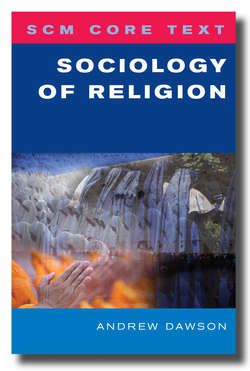Читать книгу SCM Core Text Sociology of Religion - Andrew Dawson - Страница 18
На сайте Литреса книга снята с продажи.
The sociological gaze
ОглавлениеBy way of engaging society, the discipline of sociology turns its gaze upon a variety of domains, dimensions and dynamics which manifest and contribute to the social world as both a ‘structuring structure’ (through societal determination) and a ‘structured structure’ (arising from human agency).1 Sociology, then, concerns itself with analysing societal structures and social institutions which both mould their human inhabitants and shape society’s reproduction from one generation to the next. Here, the sociological gaze alights upon the properties and processes of, for example, state, education, employment and family, with particular attention, perhaps, to their variegated mediations of power, privilege, conformity and inequality. At the same time, sociology analyses the dynamics and outcomes of these variegated mediations, not least as they relate to biological characteristics of sex, race and age or the socio-cultural categories of gender, class or caste. In combination, these multiple and variable factors generate a stratified social landscape whose hierarchies of status and authority have direct but differentiated implications for the physical (e.g. health) and social (e.g. mobility) wellbeing of its members.
Traditionally treated through the oppositional themes of ‘integration’ and ‘deviance’, sociology also concerns itself with understanding the ways in which macro-processes and institutional dynamics engender the social conformity or manage the nonconformity of individuals and the groups to which they belong. In addition to analysing the concrete mechanisms of reward and punishment, sociology looks also to grasp the impact of prevailing values, conventional beliefs and common knowledges upon individual and collective behaviour. Exemplified by the recent prominence of cultural sociology, analysis of the socializing processes through which normative behaviour is inculcated has been increasingly complemented by critical attention to popular modes of symbolic expression and aesthetic production. Today, analysis of previously neglected modes of cultural production and everyday expression (e.g. television and popular humour) accompanies established critiques of ‘high’ culture, religious systems and civic traditions. In combination, the values, tastes, practices and conventions of the cultural domain furnish the means – material and symbolic – through which life (both individual and collective) is celebrated and rendered meaningful and its latent possibilities explored and expressed.
The way in which societies change over time is also an important object of sociological scrutiny. As noted above, modern society can be distinguished from earlier (for example feudal) societies through reference both to its typical institutional features and the way these institutions interact relative to the orchestration of particular macro-structural dynamics. As both institutions and macro-structures evolve over time, so too does their interaction and the implications it has for individual members of society. Whether analysing the transition from feudal through pre-modern to modern society or engaging the successive phases of modern society itself, sociology reflects upon the causes, consequences, continuities and ruptures involved in societal transformation. In addition to its concerns with longitudinal change, sociology has an international perspective as it compares or analyses the interaction between the different kinds and versions of society in existence across the world. For example, in recent decades the radicalization of globalizing processes has provided ample opportunity to study the tensions and transformations provoked by the interaction of modern, techno-industrial systems with nations and cultures that, at least until now, have existed in relative isolation from the particular socio-economic structures spawned by the industrial revolution. At the same time, the geographical spread of modernity is giving rise to different versions of modern society (‘multiple modernities’) as the original Western model is modified subsequent to its interaction with non-Western structures, institutions and cultures (see Chapter 10).
